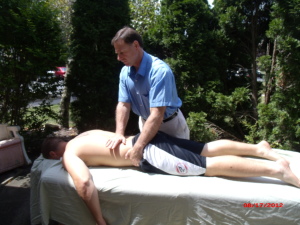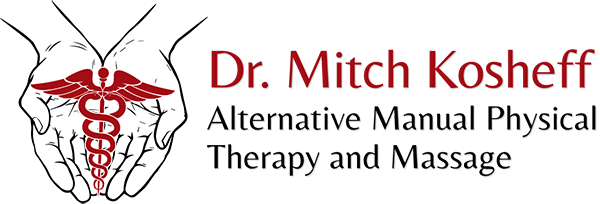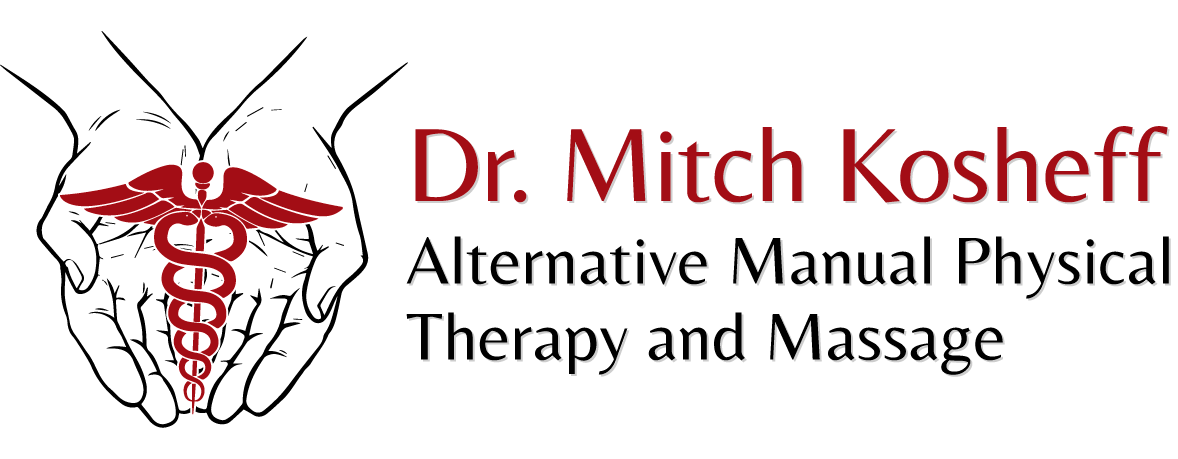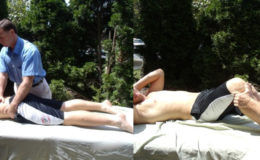 Fascia (also known as connective tissue) surrounds all areas of the body. It is under the skin, surrounds organs, around and between muscles, attaches into and goes through bones. For the longest time, we as clinicians did not know what the specific function(s) of connective tissue were; other than as a partition between and containment of structures. With the advent of the electron microscope, fascial tissue was found to have receptors for vibration and pressure, receptors for pain, and muscle spindles. Fascial tissue was also found to be able to contribute to muscle strength as it can contract and pull along with muscles. It also contributes to soft tissue extensibility as it moves and glides with motion. When and injury occurs, it’s not just muscles, ligaments, tendons, or joints that are involved; it’s also the connective tissue. A model has been developed which helps providers identify and treat fascial tissue which has become distorted causing and contributing to pain, stiffness, and loss of functioning. This model is call the Fascial Distortion Model.
Fascia (also known as connective tissue) surrounds all areas of the body. It is under the skin, surrounds organs, around and between muscles, attaches into and goes through bones. For the longest time, we as clinicians did not know what the specific function(s) of connective tissue were; other than as a partition between and containment of structures. With the advent of the electron microscope, fascial tissue was found to have receptors for vibration and pressure, receptors for pain, and muscle spindles. Fascial tissue was also found to be able to contribute to muscle strength as it can contract and pull along with muscles. It also contributes to soft tissue extensibility as it moves and glides with motion. When and injury occurs, it’s not just muscles, ligaments, tendons, or joints that are involved; it’s also the connective tissue. A model has been developed which helps providers identify and treat fascial tissue which has become distorted causing and contributing to pain, stiffness, and loss of functioning. This model is call the Fascial Distortion Model.
The Fascial Distortion Model (FDM) of evaluation and treatment was developed by an American osteopathic physician by the name of Dr. Stephen Typaldos. Dr. Typaldos identified 6 types of facial distortions that can occur in connective tissue. They are: Triggerbands, Herniated Triggerpoints, Continuum Distortions, Folding Distortions, Cylinder Distortions, and Tectonic Fixations.
Triggerband Distortions (TB): TB’s occur when a strip of connective tissue becomes “twisted” or “wrinkled”. When a TB is present, patients will complain of having a pulling, and/or burning pain along a line.
Herniated Triggerpoints (HTP): HTP’s occur when a lower layer of fascial tissue pushes up and herniates through a higher layer of tissue. When HTP’s are present, patients will report an ache, pinching, and/or catching.
Continuum Distortions (CD): CD’s occur where the fascial tissue transitions between a tendon, ligament, and bone. There will complaints of pain at one spot on a bone. There may me multiple “one spots” along a bone.
Folding Distortions (FD): A folding distortion occurs when fascial tissue surrounding a joint is unable to unfold (such as when reaching or moving foreword) or refold (such as when reaching or moving back). Patient will report a deep ache within a joint and feel as if mobility is restricted. Patient will also report this pain as being their “usual” or “normal” pain.
Cylinder Distortions (CyD): There are layers of fascial tissue that go around the trunk and limbs in a cylindrical, overlapping fashion. When those layers of tissue become distorted, patients may experience bizarre symptoms and may not be able to exactly define or pinpoint their pain. Patient may report pain as being deep, but sometimes light touch will reproduce their pain. Patients may also report their pain as jumping from place to place. They may report having tingling and numbness. Patients may also report a feeling of swelling at a joint or limb without actual swelling being present. Providers not familiar with this model may attribute these symptoms as “psychological”.
Tectonic Fixations (TF): TF’s occur when the fascial tissues around a joint becomes “stuck” and lacks the ability to glide. Patient will report stiffness in their joints and the sensation of the need to “pop” the joint.
This model is being taught to medical doctors, osteopaths, physical therapists, chiropractors, and athletic trainers. The treatment techniques involve various forms of soft tissue mobilization/manipulation along with joint manipulations; all depending upon the type of distortion(s) present. The treatment to resolve some of these distortions are painless. However, the treatment required to resolve other distortions produce some discomfort. But, this discomfort is momentary, brief lasting, and usually results in resolution or decrease in pain, stiffness, and return to function with the effects being immediate. It is noted that there may be, but not always, some side effects being bruising and residual soreness after treatment. However, when you consider the possibility of a faster recovery from an injury, faster return to work or play, and reduction or possible resolution of chronic pain issues, undergoing treatment using this model would be well worth it! And especially if treatments under other models have not worked for your condition!
If you have an acute injury or chronic pain issue and experiencing any of these symptoms, the source may be due to distorted fascial tissue. It would be worth the while to contact a medical provider or allied health professional who has had training in the Fascial Distortion Model. You can contact the American Fascial Distortion Model Association (www.afdma.com) to find an FDM practioner in your area. And, if you are in or around the Jackson, NJ area, feel free to contact me (Dr. Mitchell Kosheff – Clinical Doctor of Physical Therapy, Certified Specialist in Manual Therapy) at: (732) 642 – 5055 for more information and a free telephone consultation.
About the Author: Dr. Mitchell Kosheff is a clinical doctor of physical therapy. He has been in practice since 1994. He is a certified specialist in manual therapy, a diploma graduate-program in fascial manipulation, a certified clinical instructor, and cross licensed as a massage and bodywork therapist. He has participated in coursework using the Fascial Distortion Model. Dr. Kosheff takes a “hands on” eclectic approach utilizing a variety of evaluation and treatment approaches so as to find and correct impairments that other single treatment approaches may have overlooked. For more information you can go to Dr. Kosheff’s website at: www.drmitchpt.com or; feel free to contact Dr. Kosheff at the telephone number listed above.


